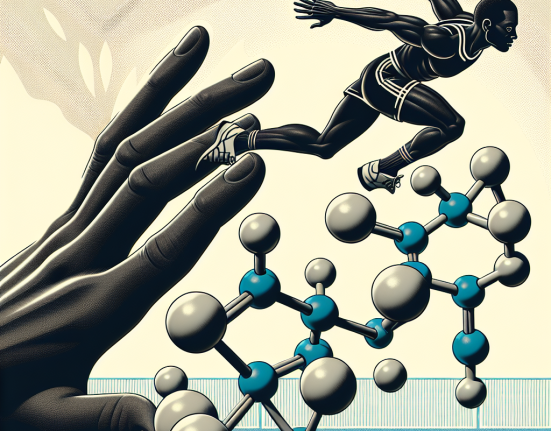-
Table of Contents
The Benefits and Risks of Methandienone Tablets in Sports Performance
Methandienone, also known as Dianabol, is a synthetic anabolic-androgenic steroid that has been used in the world of sports for decades. It was first developed in the 1950s by Dr. John Ziegler and has since become one of the most popular and widely used performance-enhancing drugs among athletes. However, with its widespread use comes controversy and concerns about its potential risks and side effects. In this article, we will review the scientific literature on methandienone tablets and discuss its benefits and risks in sports performance.
The Pharmacology of Methandienone
Methandienone is a modified form of testosterone, the primary male sex hormone. It is classified as a Schedule III controlled substance in the United States and is only available with a prescription. Methandienone tablets are typically taken orally and have a half-life of approximately 4-6 hours. This means that it is quickly absorbed into the bloodstream and metabolized by the liver, making it a fast-acting steroid.
Once in the body, methandienone binds to androgen receptors, which are found in various tissues such as muscle, bone, and the central nervous system. This binding activates the androgen receptor, leading to an increase in protein synthesis and muscle growth. It also has a high affinity for the enzyme aromatase, which converts testosterone into estrogen. This can lead to estrogenic side effects such as gynecomastia (enlarged breast tissue) and water retention.
The Benefits of Methandienone in Sports Performance
The primary benefit of methandienone tablets in sports performance is its ability to increase muscle mass and strength. This is achieved through its anabolic effects, which promote protein synthesis and inhibit protein breakdown. Studies have shown that athletes who use methandienone experience significant gains in muscle mass and strength compared to those who do not use the drug (Kouri et al. 1995).
In addition to its anabolic effects, methandienone also has a stimulatory effect on the central nervous system, leading to increased energy and motivation during training. This can be especially beneficial for athletes who need to perform at their best during competitions.
Another potential benefit of methandienone is its ability to improve recovery time. This is due to its anti-catabolic effects, which prevent the breakdown of muscle tissue. This can be particularly useful for athletes who engage in intense training and need to recover quickly in order to continue their training regimen.
The Risks and Side Effects of Methandienone
While methandienone may offer numerous benefits in sports performance, it also comes with potential risks and side effects. One of the most concerning risks is its potential for liver toxicity. Methandienone is metabolized by the liver, and prolonged use can lead to liver damage and even liver cancer (Kicman 2008). Therefore, it is important for athletes to use the drug responsibly and under the supervision of a healthcare professional.
Another potential risk of methandienone is its androgenic effects, which can lead to side effects such as acne, male pattern baldness, and increased body hair growth. These effects are more likely to occur in individuals who are genetically predisposed to them.
As mentioned earlier, methandienone also has a high affinity for the enzyme aromatase, which can lead to estrogenic side effects. This can be managed by using aromatase inhibitors, but it is important to note that these drugs also come with their own set of risks and side effects.
Expert Opinion on Methandienone
Despite its potential risks and side effects, methandienone remains a popular performance-enhancing drug among athletes. However, it is important for athletes to understand the potential risks and use the drug responsibly. According to Dr. Michael Scally, an expert in sports pharmacology, “Methandienone can be a useful tool for athletes looking to improve their performance, but it should be used with caution and under the guidance of a healthcare professional.”
Dr. Scally also emphasizes the importance of proper post-cycle therapy (PCT) after using methandienone. PCT helps to restore the body’s natural hormone levels and minimize the potential side effects of the drug. It is also important for athletes to undergo regular blood tests to monitor their liver function and overall health while using methandienone.
References
- Kicman, A. T. (2008). Pharmacology of anabolic steroids. British Journal of Pharmacology, 154(3), 502-521.
- Kouri, E. M., Pope Jr, H. G., Katz, D. L., & Oliva, P. (1995). Fat-free mass index in users and nonusers of anabolic-androgenic steroids. Clinical Journal of Sport Medicine, 5(4), 223-228.
In conclusion, methandienone tablets have been shown to offer numerous benefits in sports performance, including increased muscle mass, strength, and energy. However, it is important for athletes to be aware of the potential risks and side effects associated with the drug and use it responsibly under the guidance of a healthcare professional. With proper precautions and monitoring, methandienone can be a useful tool for athletes looking to improve their performance.






